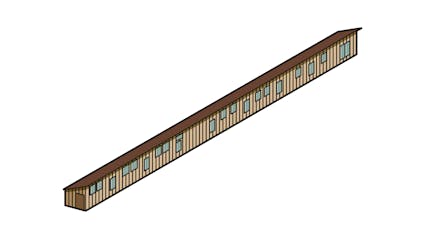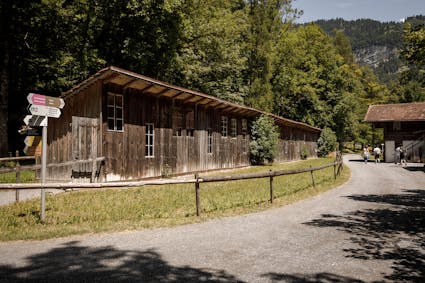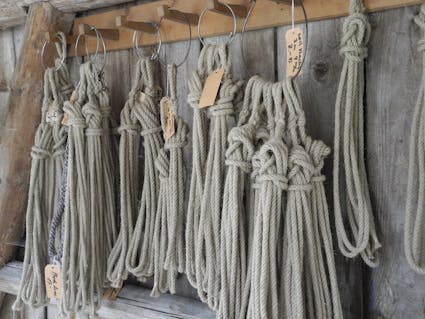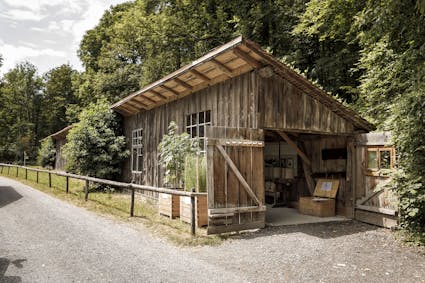1061 – Rope Walk from Unterägeri, Zug, 1897
1897 Xaver Iten erected a 95 metre long (312 feet) covered rope walk.

One Trade, Three Generations
Xaver Iten (1873–1947) made rope in Unterägeri on the Lake of Aegeri – like his father Kaspar Josef Iten (born 1825) and his grandfather Karl Bartholome Iten (born 1779). They twisted their ropes in the open air, exposed to the vagaries of the weather, in the “Birizug” south of the Lorze river. In 1897 Xaver Iten erected a 95 metre long (312 feet) covered rope walk at Lidostrasse 21 on the Neubächli brook. The construction is simple: wooden posts clad with boards form the walls – workshops like this were often built this way. Inside the long building Iten and his wife wove thin twine to thick ropes.

Demand for Rope
Builders, the army, foresters and farmers constituted Iten’s market. He made ropes for construction sites, climbing ropes for mountain troops, ropes for felling timber, farm ropes for securing bundles of hay, cotton-bale ropes for textile mills or thick crane cables for lifting loads. Xaver Iten had a sales shop in the dwelling house next to the rope walk where his daughters sold not only rope but also twine, hammocks and other products.

New Materials, New Technology
When Iten died in 1947, the rope walk was shortened by half, the furnishings removed and the shed used for storage for a new sawmill. In 2010 the rope walk was dismantled to make way for new dwelling projects planned on the land. In 2011 it began a new life in the surviving length of 42 metres (138 feet) in the Ballenberg Open-Air Museum. Most of the equipment inside comes from a rope walk in Niederwichtrach (between Berne and Thun). Today the trade of rope making in this manner is as good as extinct, since strong twines and ropes of artificial fibre have been developed in recent decades.

Pulling a Long Rope
Tying a calf with a line, binding a bundle of hay with a rope, a cable for a crane, hanging fruit on thick twine to dry, binding logs onto a sleigh with a thick rope, fine cords for the household: we cannot do without lines, ropes and cables. He who pulls the longest rope hauls more in. In most villages there was someone familiar with ropemaking. He could hand-tie small ropes of leather or hemp for binding hay. His workshop was small and modest. Longer ropes and thicker cables, say for ferries, had to come from a rope walk in the region: a long prominent building. There is still a handful of modern rope factories in Switzerland.

What can you see now in Unterägeri where this rope-walk used to stand?
Where ropes were once twisted and wound, now people unwind.
Ballenberg
Swiss Open-Air Museum
Museumsstrasse 100
CH-3858 Hofstetten bei Brienz
Company holidays
24 December 2025 to 11 January 2026
Opening hours Administration
3 November 2025 to 8 April 2026
From Monday to Friday
8.30 am to 11.30 am
1.30 pm to 4.30 pm
Opening hours
9 April to 1 November 2026
10 am to 5 pm daily